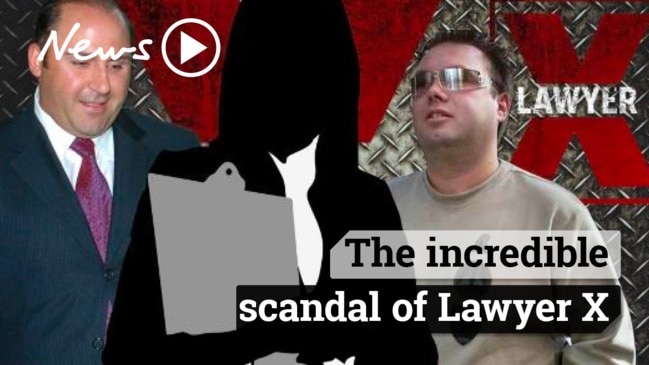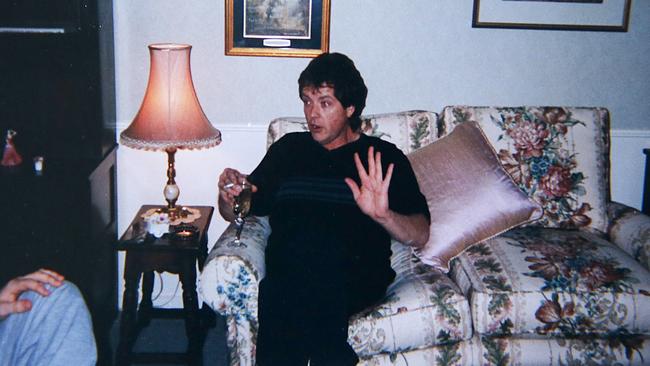Police document revealing pros and cons of using Gobbo as witnessed released
An internal police document, detailing the strengths and weaknesses of turning informer Nicola Gobbo into a bombshell witness, has been released by the Lawyer X Royal Commission.

Law & Order
Don't miss out on the headlines from Law & Order. Followed categories will be added to My News.
The Lawyer X Royal Commission has released a “protected’’ internal police document which predicted how Gobbo’s use as an informer might impact Victoria Police if exposed.
A SWOT analysis (strengths, weaknesses, opportunities and threats), released on Boxing Day by the commission, was prepared by Victoria Police in late December, 2008, to assess the risks versus rewards of turning lawyer and star informer Nicola Gobbo from a high value informer into a bombshell witness.
Following the SWOT analysis, prepared by Gobbo’s handlers, the star informer was turned into a witness against alleged corrupt police officer Paul Dale, who would weeks later be charged with murder.

It came weeks after Gobbo had worn a wire to record Dale — an associate whom she had an affair — over the murder of an informer he handled -who became a prosecution witness against him – Terence Hodson
Hodson and his wife, Christine, were killed side-by-side in May, 2004.
It had long been suspected that Hodson was executed on the orders of corrupt police as he prepared to give evidence against Dale and another police officer, David Miechel, over a burglary they allegedly committed together in September, 2003.
Laid bare in the ‘’briefing note’’ to Superintendent Tony Biggin is the potential for an Office of Police Integrity or a government review into the legal and ethical implications of Gobbo’s informing to police.

This only covers her informing stint from September, 2005, to January, 2009.
Then Deputy Commissioner Simon Overland was integral to turning Gobbo into a witness against Dale, as documents released reveal.
There were fears that once Gobbo became a witness, or indeed entered a witness box, her long-term relationship with police as an informer would be exposed.
Also noted under “Threats’’ was speculation by police that Gobbo’s motivation for becoming an informer was a ‘’guilty conscience’’.

This is widely thought to be a reference to her knowledge about the Hodson murders.
‘’HS (Gobbo) has never admitted criminal activity to SDU (Source Development Unit),’’ the SWOT analysis states.
‘’SDU suspects that part of the motivation of (Gobbo) to assist (police) is a guilty conscience.’’
The police analysis also considers Gobbo’s credibility an issue, noting her ‘’acquaintances, criminal associates and sexual relationships.’’
It was also predicted Gobbo’s use as a police informer could:
• Cause reputational damage to Victoria Police and Gobbo,
• Lead to a judicial review of police actions to task and deploy one of their own’’.
• Spark unsafe prosecution verdicts and appeals,
• Place Gobbo at ‘’risk of death or serious injury’’ if her role was exposed,
• Expose the force to being sued by Gobbo.
• Reveal police methodology by the media.
The SWOT analysis also noted Gobbo had failed to tell her police handlers the extent of her dealings with Dale, including using ‘’bogus’’ phones to communicate with him.
These phone calls on ‘’bogus’’ phones were in the lead up to the Hodsons being murdered.
Gobbo’s mental state was also a concern.
It was noted that the criminal barrister for high-profile criminals such as Tony Mokbel and his brothers, and Carl Williams and members of his crew, used morphine daily for chronic pain and was ‘’possibly suffering depression’’.
Among the main strengths of turning Gobbo into a witness was ‘’deactivating’’ her as an informer.
It was hoped by Mr Overland that Ms Gobbo would accept police protection.
Gobbo would not, however, give evidence against Paul Dale and turned on police, suing them.
The Lawyer X royal commission will recommence in January.
